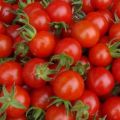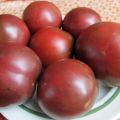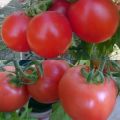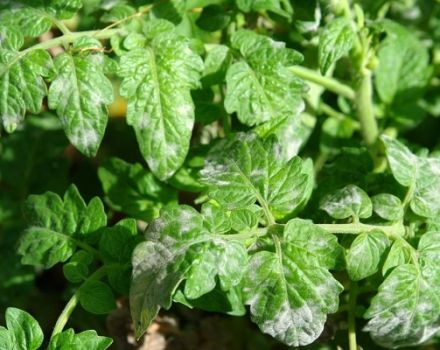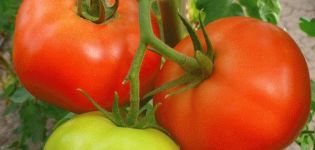Description of the Black Russian tomato variety, yield and cultivation
Custom-colored tomatoes are becoming more and more popular. Tomato Black Russian will delight hardworking gardeners with beautiful tasty fruits. A bountiful harvest is stored for a long time, adds brightness to the vegetable assortment.
What does it look like
Breeders have developed a variety for indoor use. Tomato grows well in film, glass, plastic unheated greenhouses. In the southern regions, under favorable climatic conditions, the fruits ripen in the open field.
Description of tomato:
- bush up to 180 cm high (outdoors <120 cm);
- the color of the leaf plates is dark green;
- average ripening period (120 days from germination to the first harvest);
- the bush forms clusters of up to 5 berries in each;
- strong overgrowth of shoots;
- small leaves.
Average yield of tomatoes 5 kg / bush. Competent agricultural technology allows you to increase it by 20%.
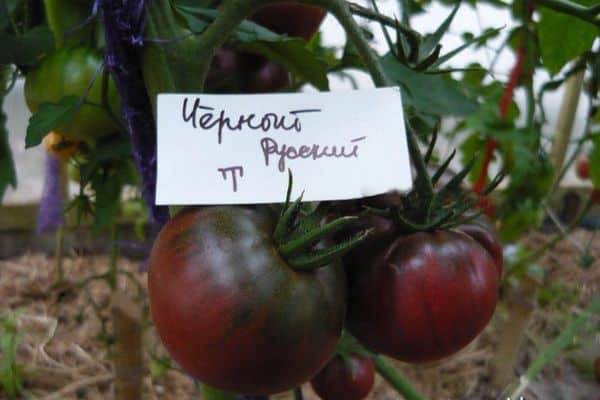
What are the fruits
The bush is beautiful when the fruit is being poured. The berries gradually change from light green to chocolate red in color. Black tomato has a delicate sweet taste. The characteristic acid is absent.
The berry is different:
- large size: 200-300 g;
- weak ribbing;
- rounded, slightly depressed, shape;
- a large number of chambers with seeds;
- dense coarse skin.
The fruit's pleasant taste is determined by the large amount of mono and polysugars. The high content of vitamin B, provitamin A, choline makes tomato beneficial for health. The color of tomatoes is determined by anthocyanin. The intensity of the color depends on the light. The sun's rays are brighter - the skin is darker.
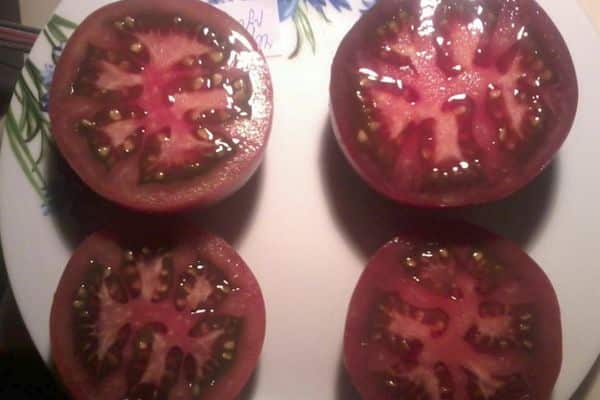
The substance itself is an excellent antioxidant. Regular inclusion of fruits in the menu increases immunity, relieves swelling, cleanses blood vessels.
Agricultural technology of cultivation
The rules for growing tomato are common:
- sowing seedlings on March 15-20;
- landing on a permanent place in early May (in open ground - after late spring frosts);
- feeding during planting (2 tablespoons of double superphosphate under the plant);
- timely watering (after complete drying of the soil 5 liters under the bush);
- mulching the beds;
- forming into 2 stems;
- pinching;
- clarification of ovaries;
- obligatory garter of stems and brushes;
- removal of leaves until the ovary is overflowing;
- nitrogen application is recommended before flowering;
- then feed with mineral complexes every 10 days;
- stop applying a month before the harvest ripens;
- ventilate the greenhouse;
- remove ripe fruits in a timely manner.
It is required to regularly monitor the temperature in the greenhouse. With an increase of more than 30 ⁰С, the pollen is sterilized, the tomato does not set fruit.
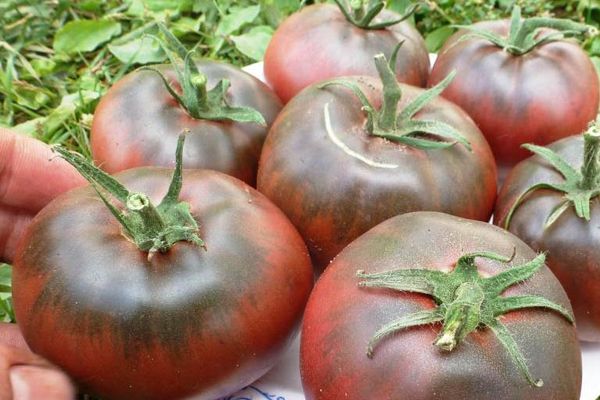
How to protect crops from diseases and pests
Black Russian is an old variety.It is affected by rot, TMV, downy mildew, spotting. For protection you should:
- avoid waterlogging, water getting on the leaves;
- make timely feeding: they strengthen the bushes;
- ventilate the greenhouse;
- observe the circulation of crops;
- siderize the soil;
- use copper-containing drugs;
- use folk remedies (serum, ash).
Eggshells will help scare off slugs, mulching the soil with straw. Insecticides will save the bushes from whiteflies and spider mites.
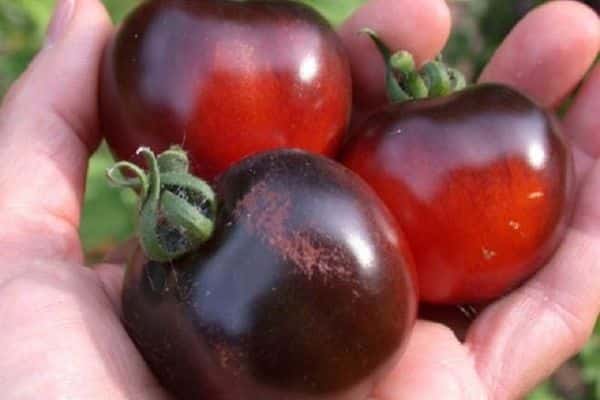
What gardeners say
People share their impressions of the Black Russian tomato. Positive reviews:
- wonderful taste;
- original color;
- good productivity from a bush;
- high transportability;
- the ability to ripen.
Gardeners complain about: capriciousness of the plant, spreading (you can plant 3 bushes / m² maximum). Some get from their seeds bushes with strange fruits: black-pink and red-black.
The variety takes a strong place in the collections of summer residents. The tomato is delicious, ideally decorates juices, pastas, mashed potatoes, salads.


